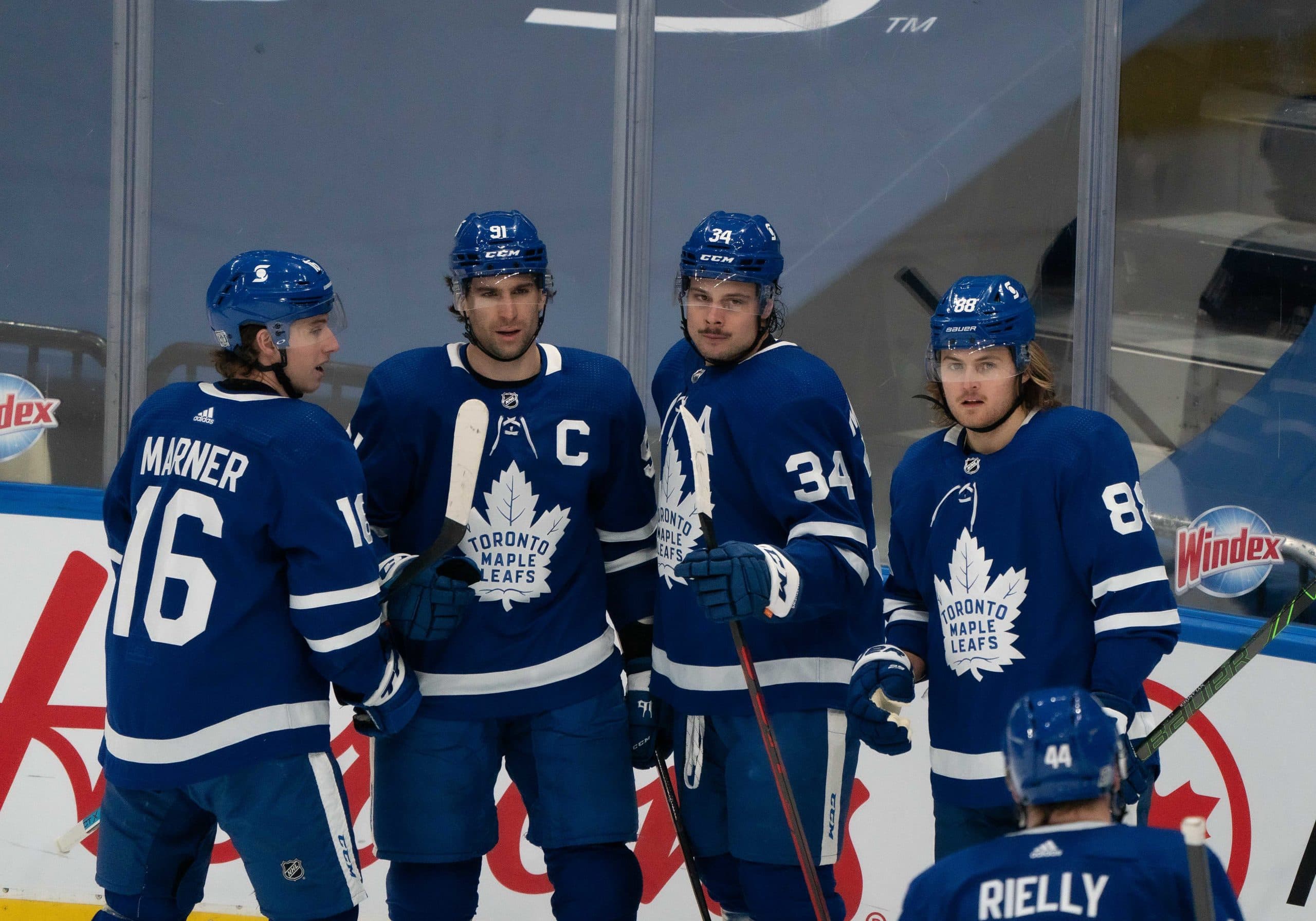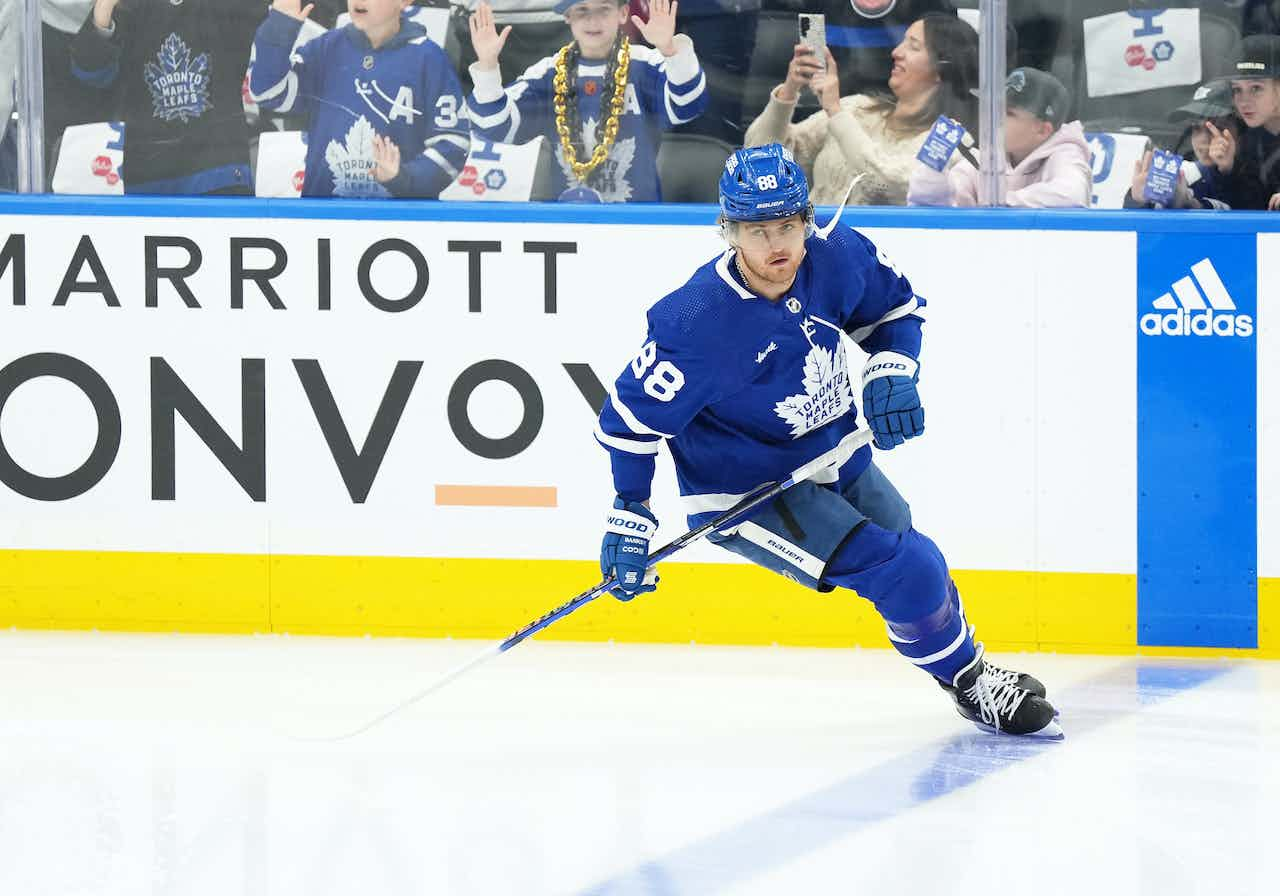The Leafs powerplay doesn’t need fixing, but it could still be better

By Jon Steitzer
2 years agoIt goes without saying that if you write about the powerplay and schedule the post for the next day, there is guaranteed to be a powerplay goal. Nevertheless, this was never meant as a criticism of the Leafs powerplay, but a possible enhancement. Also, please note all stats are prior to the Leafs game and the Oiler game on November 16th.
The Leafs presently have the 7th best powerplay in the league. Is it wrong of us to still believe it can be better? Heading into Tuesday night’s game with Nashville, the Leafs are sitting at a 25% success rate, and they’ve picked up 11 goals on the PP so far this season in the first 16 games. This is pretty great considering that the Leafs are 26th in powerplay ice-time this year, something is both a combination of their powerplay success, but also speaks to the severally limited number of powerplays they receive, which sits at 44 powerplay attempts, good for 16th in the league. So maybe the refs aren’t completely out to get the Leafs, but certainly aren’t being done favours by them either.
Yes, things are going much better for the Leafs on the powerplay so far compared to their 20% success rate last season, that was heavily weighted by their strong start last year before things turned to…well…shit.
Still, is it wrong to believe the Leafs powerplay could be even better? So far what we’ve see is an increased acknowledgement of how the players actually play and they are no longer being forced into roles that they aren’t suited for. Morgan Rielly is no longer a shooter, neither is Mitch Marner. Those are improvements. The Leafs are skating again, that is a good thing because the static positioning last year not only made the units predictable but were practically engineered for interceptions which saw even the Leafs best skaters of being quick enough to get back to break up some unfortunate breakaway opportunities.
The biggest question for what could improve comes down to usage and that is the Leafs reluctance to keep their top unit out on the ice for the entirety of the powerplay. This comes from the simple recognition that there is a steep drop off from the offensive abilities of Matthews, Marner, Tavares, Nylander and Rielly to Pierre Engvall, Nick Ritchie, Michael Bunting, and to a lesser extent Jason Spezza and Rasmus Sandin.
Presently the top powerplay unit is seeing around 2/3rds of the powerplay time. They’ve also accounted for 8 of the 11 goals, which again isn’t a compelling call to arms, but rather an acknowledgement that your best players are likely to achieve even beyond that.
The reasoning for considering this idea is simple, and it’s looking at one of the few things the Oilers do right and emulating it. Connor McDavid, Leon Draisaitl, and Ryan Nugent-Hopkins play around 89% of the Oilers powerplay time. Their powerplay success rate is at 42%. Tyson Barrie sees the bulk of the PP QB time at 77%, with Darnell Nurse picking up the slack. The only real split of duties seems to come between Zach Hyman and Jesse Puljujarvi, which again is something the Leafs could adopt as well if they see the need to either trot out Jason Spezza’s heavier shot, Michael Bunting’s agitation, or Nick Ritchie’s ability to be big and stand in front of things.
The obvious difference between adopting this strategy on the Oilers versus adopting it on the Leafs is that the Oilers have Connor McDavid, and while you can give the edge to the Leafs in any other possible comparison, Connor McDavid is otherworldly and there are things that will only work when he’s on the ice.
Other than the Oilers, no other teams seem to be attempting this approach. The Blackhawks utilize Patrick Kane over 80% of the time on the powerplay, and a number of teams have players they use over 70% of the powerplay, but there generally seems to be much more of a split even below what the Leafs currently use. Of course when you look at the many of the other teams they are not so heavily invested in four or five star players, and a greater balance exists between their powerplay units as well. The case for the Leafs is much stronger to go overboard with the top unit.
Of course after you’ve had that unit out for an extended period of time there is a need to rest your stars afterwards, and that’s where the Leafs can continue to benefit of the low event hockey of the Kampf line to get things back to normal.
The idea is pretty simple, and that is play who you pay. There might not be a tremendous need for it in November when things are going well, but as the season progresses it would be nice to see the Leafs lean into this idea a bit more in anticipation of needing their stars at their best and playing with frequency come playoff time.
Data from NHL.com
BROUGHT TO YOU BY DAILYFACEOFF

Looking to up your fantasy hockey game? DailyFaceoff has the tools you need for both daily and season-long fantasy leagues, including a lineup optimizer, daily projections, and a whole lot more. Sign up for the DailyFaceoff tools here.
Recent articles from Jon Steitzer





